Formula C15H24 Boiling point 268 °C | Molar mass 204.36 g/mol Density 905 kg/m³ | |
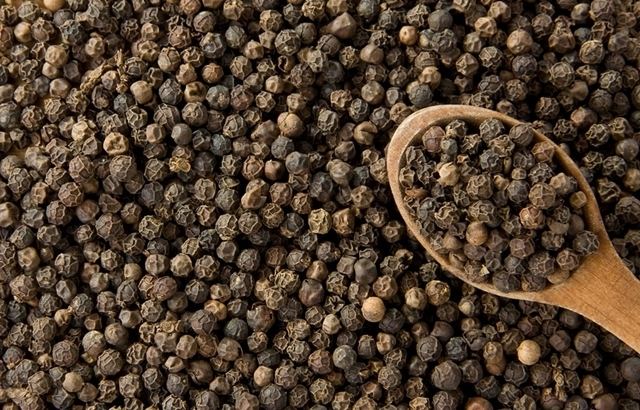 | ||
Caryophyllene
Caryophyllene /ˌkærioʊfɪˈliːn/, or (−)-β-caryophyllene, is a natural bicyclic sesquiterpene that is a constituent of many essential oils, especially clove oil, the oil from the stems and flowers of Syzygium aromaticum (cloves), the essential oil of Cannabis sativa, rosemary, and hops. It is usually found as a mixture with isocaryophyllene (the cis double bond isomer) and α-humulene (obsolete name: α-caryophyllene), a ring-opened isomer. Caryophyllene is notable for having a cyclobutane ring, as well as a trans-double bond in an 8-membered ring, both rarities in nature.
Contents
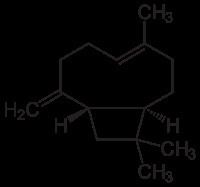
The first total synthesis of caryophyllene in 1964 by E.J. Corey was considered one of the classic demonstrations of the possibilities of synthetic organic chemistry at the time.
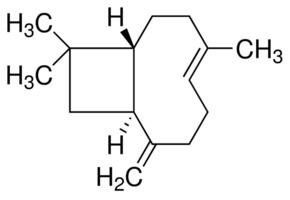
Caryophyllene is one of the chemical compounds that contributes to the spiciness of black pepper.
Metabolism and derivatives
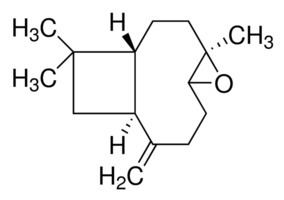
14-Hydroxycaryophyllene oxide (C15H24O2) was isolated from the urine of rabbits treated with (-)-caryophyllene (C15H24). The x-ray crystal structure of 14-hydroxycaryophyllene (as its acetate derivative) has been reported.
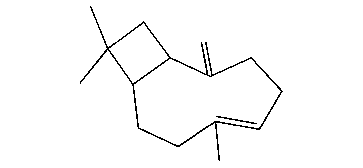
The metabolism of caryophyllen progresses through (-)-caryophyllene oxide (C15H24O) since the latter compound also afforded 14-hydroxycaryophyllene (C15H24O) as a metabolite.
Caryophyllene (C15H24) → caryophyllene oxide (C15H24O) → 14-hydroxycaryophyllene (C15H24O) → 14-hydroxycaryophyllene oxide (C15H24O2).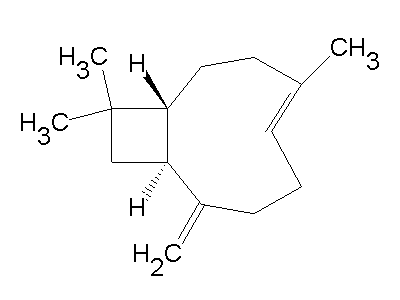
Caryophyllene oxide, in which the olefin of caryophyllene has become an epoxide, is the component responsible for cannabis identification by drug-sniffing dogs and is also an approved food flavoring.
Potential pharmacology

Caryophyllene was shown to be selective agonist of cannabinoid receptor type-2 (CB2) and to exert significant cannabimimetic antiinflammatory effects in mice. Antinociceptive, neuroprotective, anxiolytic and antidepressant and anti-alcoholism activity in in vitro studies and in rodent models have been reported. Whether this compound is able to modulate inflammatory processes in humans via the endocannabinoid system is yet unknown. However, it is found to elicit significant neuroprotection by its anti-inflammatory and antioxidant activities mediated by activation of the CB2 receptors in rats. Caryophyllene does not bind to the centrally expressed cannabinoid receptor type-1 (CB1) and therefore does not exert psychoactive effects. However, phytocannabinoid-terpenoid interactions that could produce synergy with respect to treatment of pain, inflammation, depression, anxiety, addiction, epilepsy, cancer, fungal and bacterial infections (including methicillin-resistant Staphylococcus aureus) are found. Scientific evidence have been presented for non-cannabinoid plant components as putative antidotes to intoxicating effects of THC (C21H30O2), that could increase its therapeutic index.
